- Today : 2025.07.12
- D-Day
- Information
Seoul, Korea
- Current page path
 HOME > Information > Seoul, Korea
HOME > Information > Seoul, Korea
About Korea
The Korean Peninsula is located in North-East Asia. It is bordered by the Amnok River (Yalu River) to the northwest, separating Korea from China, and the Duman River (Tumen River) to the northeast which separates Korea from both China and Russia. The country itself is flanked by the Yellow Sea to its west and the East Sea to the east. There are several notable islands that surround the peninsula including Jejudo, Ulleungdo and Dokdo.
The Korean peninsula is roughly 1,030 km (612 miles) long and 175 km (105 miles) wide at its narrowest point. Korea's total land area is 100,033 sq km, and it has a population of 51.1 million people (2018). Because of its unique geographical location, Korea is a very valuable piece of land and an international hub of Asia.
About Seoul
Seoul, the Gateway to Asia and Europe
The Korean Peninsula lies in the center of Northeast Asia. The coordinates of its capital, Seoul, are 37.34° N and 126.59° E, putting it in close proximity to the Yellow Sea. Seoul is within a three-hour flight from 43 cities with populations of over one million people. Korea’s location between China and Japan has been a great geographical advantage for the nation.
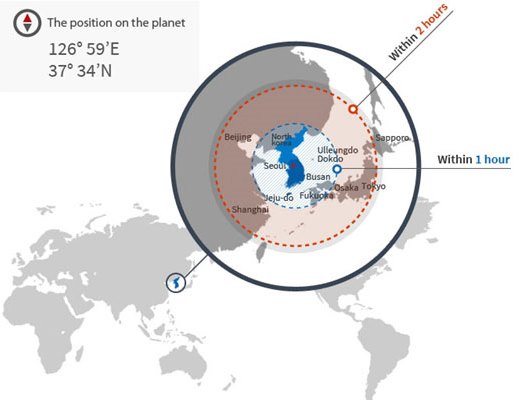
The Hangang (River) flows horizontally across Seoul, dividing the city into two sections lying north and south of the river.

There are 25 autonomous districts and 423 administrative “dong” units in Seoul. The city covers 0.28% of the entire peninsula (or 0.61% of South Korea), and spans an area 30.30 km north-to-south and 34.78 km west-to-east.
COPYRIGHT © SEOUL METROPOLITAN GOVERNMENT. ALL RIGHTS RESERVED.
For more information, please refer to The Official Travel Guide to Seoul. Click here
Like the rest of Korea, Seoul has four distinct seasons, which means the landscape changes considerably throughout the year. This unique climate is deeply embedded within Korea’s cultural fabric.
- Spring in Seoul
-
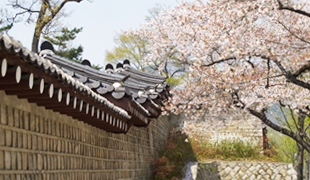 Seoul’s average temperature is 12.5°C, and spring begins around March, when the entire city bursts into flowers. Many Seoulites enjoy strolling around Yeouido or other green spaces throughout the city that are filled with an astonishing display of cherry blossoms, forsythias, azaleas, and magnolias. This is the season when the temperature drops sharply after nightfall. Those planning to visit Seoul at this time must remember to pack suitable clothing. A pair of sunglasses and a mask to keep you safe from inhaling the yellow dust that is carried over from China during the spring are essential. The atmosphere can be extremely dry, so take extra care if you have sensitive skin or a sore throat.
Seoul’s average temperature is 12.5°C, and spring begins around March, when the entire city bursts into flowers. Many Seoulites enjoy strolling around Yeouido or other green spaces throughout the city that are filled with an astonishing display of cherry blossoms, forsythias, azaleas, and magnolias. This is the season when the temperature drops sharply after nightfall. Those planning to visit Seoul at this time must remember to pack suitable clothing. A pair of sunglasses and a mask to keep you safe from inhaling the yellow dust that is carried over from China during the spring are essential. The atmosphere can be extremely dry, so take extra care if you have sensitive skin or a sore throat.
- Summer in Seoul
-
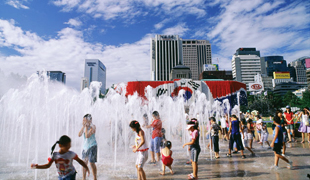 Seoul’s long, hot, and humid summer is only interrupted by sporadic monsoon rains in June and July. If you find Seoul somewhat quiet during this period, that’s because many Koreans go on vacation at this time of year. You will also find people gathered around the water fountain in front of Gwanghwamun Square or under a bridge along the Hangang (River). Banpodaegyo (Bridge) is a popular spot that offers a fantastic view of the city
Seoul’s long, hot, and humid summer is only interrupted by sporadic monsoon rains in June and July. If you find Seoul somewhat quiet during this period, that’s because many Koreans go on vacation at this time of year. You will also find people gathered around the water fountain in front of Gwanghwamun Square or under a bridge along the Hangang (River). Banpodaegyo (Bridge) is a popular spot that offers a fantastic view of the city
- Fall in Seoul
-
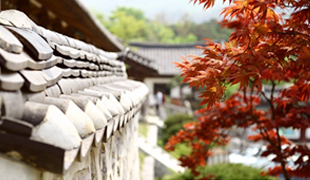 Seoul’s pleasant autumn season lasts from September to November. Seoul is filled with bright autumnal colors at this time of year. It is the harvest season, which is celebrated by paying tribute to the ancestral deities and spirits. It is also the season in which people prepare for the imminent winter. In addition, Seoul Street Art Festival (Hi Seoul Festival), one of Seoul’s major festivals, is held during this period. During this time, Changgyeonggung Palace and Gyeongbokgung Palace are also open to the public in the evenings, as well as the Seoul Lantern Festival, which lights up the streets at night, offering many spectacles.
Seoul’s pleasant autumn season lasts from September to November. Seoul is filled with bright autumnal colors at this time of year. It is the harvest season, which is celebrated by paying tribute to the ancestral deities and spirits. It is also the season in which people prepare for the imminent winter. In addition, Seoul Street Art Festival (Hi Seoul Festival), one of Seoul’s major festivals, is held during this period. During this time, Changgyeonggung Palace and Gyeongbokgung Palace are also open to the public in the evenings, as well as the Seoul Lantern Festival, which lights up the streets at night, offering many spectacles.
- Winter in Seoul
-
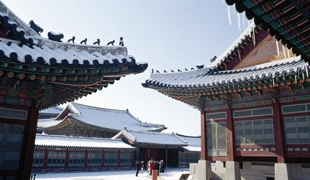 Due to the strong influence of icy air from the North, winter is quite cold in Seoul. This is when public areas all over Seoul open skating rinks. The days become markedly shorter, and you will see Seoulites busily going about their business wrapped up against the cold under myriad flashy neon lights.
Due to the strong influence of icy air from the North, winter is quite cold in Seoul. This is when public areas all over Seoul open skating rinks. The days become markedly shorter, and you will see Seoulites busily going about their business wrapped up against the cold under myriad flashy neon lights.
Seoul’s average temperature and rainfall by month (unit ℃,mm)
| Month | 1 | 2 | 3 | 4 | 5 | 6 | 7 | 8 | 9 | 10 | 11 | 12 | Year |
|---|---|---|---|---|---|---|---|---|---|---|---|---|---|
| Temperature | -0.9 | 1 | 6.3 | 13.3 | 18.9 | 23.6 | 25.8 | 26.3 | 22.4 | 15.5 | 8.9 | 1.6 | 13.6 |
| Rainfall | 11.3 | 22.7 | 9.6 | 80.5 | 28.6 | 99 | 226 | 72.9 | 26 | 81.5 | 104.6 | 29.1 | 792.1 |

COPYRIGHT © SEOUL METROPOLITAN GOVERNMENT. ALL RIGHTS RESERVED.
For more information, please refer to The Official Travel Guide to Seoul.
Click here
Seoul’s food does wonders in attracting people to the city. Whatever you have, wherever you are, the food will never fail to satisfy you. From fine dining to casual street food, you will find traditional Korean food, a variety of western cuisine, and fusion cuisine served all throughout the city at restaurants that make you feel like eating at home.
Korean Cuisine
Korean cuisine uses lots of fresh ingredients to create diverse flavors and nutritious, healthy meals and is well-received by foreigners. The food in Korea is relatively cheap but high in quality, and one can find restaurants running late into the night and even ones open 24-hours. The majority of tourists find Korean cuisine suitable to their tastes, and dining out is frequent even among Seoulites.
- Bibimbap is a Popular Korean Dish
-

Bibimbap is a popular Korean dish that contains many ingredients mixed in a bowl along with rice and hot pepper paste. It is also one of the most representative Korean dishes, along with bulgogi and kimchi.
There was a long standing tradition, among Korean ancestors, that any leftover food on New Year’s Eve was not to be kept into the New Year. For this reason, the practice of mixing various ingredients in a bowl with rice was started.
- Gimbap (Korean rolls) is a Perfect Picnic Food
-
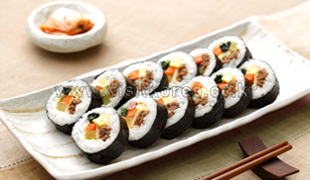
Gimbap is a popular Korean food made of steamed rice, seasoned with salt and sesame oil, and made with various ingredients (spinach, radish, carrot, egg, and ham), and rolled in slightly-roasted dried seaweed. It is served in bite-size slices.
- Dolsot-bap is a Nutritious Hot pot dish
-
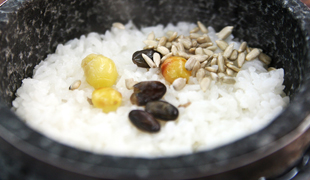
Dolsot-bap is made of soaked sweet rice, rice, chestnut, julienned jujube, and ginseng. It is cooked in a stone pot and the seasoning is served on the side. According to a legend, this dish was developed during the Joseon Dynasty, when royal court families visited Beopjusa Temple for prayer service. The monks made dolsot-bap with readily-available food ingredients so that they could quickly serve them.
- Samgyeopsal (grilled pork belly) is the All-Time Favorite Food of Koreans
-

Samgyeopsal was named as such because the pork belly cuts have three layers of meat and fat. Samgyeopsal is from the wide and flat area that is located next to the pork chops and extends to the belly area. As the meat and fat form multiple layers, this part of the pig is the most flavorful type of pork and is used in many dishes.
- Bulgogi is Foreigners’ Most Favorite Korean Dish
-
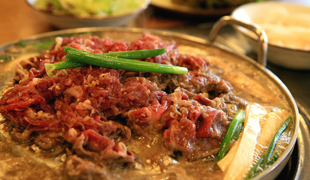
Bulgogi is the most typical Korean beef dish and is one of the most favored Korean dishes amongst foreigners.
During the Goryeo Dynasty, the dish developed into seolyameokjeok, which means a grilled dish people eat on a snowy night. During the Joseon Dynasty, it changed into neobiani, or Royal Court food.
- Jokbal (Steamed Pigs' Feet ) and Bossam (Napa Wraps with Pork) are Koreans’ Favorite Mid-Night Dishes
-
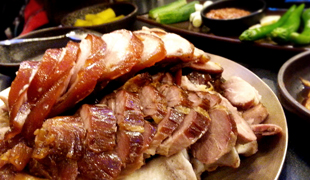
Jokbal and bossam dishes use pork, and jokbal is Koreans’ favorite mid-night food.
Seoul is a city that embraces the beauty of both tradition and modernity. With five ancient palaces and five World Heritage Sites designated by UNESCO, Seoul is living history of 600 years as the capital of the Chooseon Dynasty. You can experience how life was like in the past at hanok villages (traditional Korean houses), learn to make kimchi and traditional handicrafts, learn taekwondo, try making makgeolli (Korean rice wine), and try a temple stay. Many exciting and unique experiences await you in Seoul.
- A Peek into Korean Culture
-

The streets of Insadong, the medicinal herbs market and various traditional markets will present a different type of fun and excitement.
- Korea’s Palace: Gyeongbokgung Palace
-

Built in 1395, the location of the palace was determined based on the principles of feng shui, having Mt. Bukaksan to the back and Yukjo Street to the front along with Gwanghwamun (gate). Further to the front stands Mt. Namsan and the Cheonggyecheon Stream flows through the area, making the location the best spot in terms of feng shui. Perhaps it was indeed because of the auspiciousness of the location, but the Choseon Dynasty reigned for more than 600 years.
- A Peek into Korean Culture
-

Built in 1395, the location of the palace was determined based on the principles of feng shui, having Mt. Bukaksan to the back and Yukjo Street to the front along with Gwanghwamun (gate). Further to the front stands Mt. Namsan and the Cheonggyecheon Stream flows through the area, making the location the best spot in terms of feng shui. Perhaps it was indeed because of the auspiciousness of the location, but the Choseon Dynasty reigned for more than 600 years.
- A Peek into Korean Culture
-

The streets of Insadong, the medicinal herbs market and various traditional markets will present a different type of fun and excitement.
For more information, please refer to The Official Travel Guide to Seoul. Click here
- Quick Links

 Online Registration
Online Registration Online Submission
Online Submission My Page
My Page



